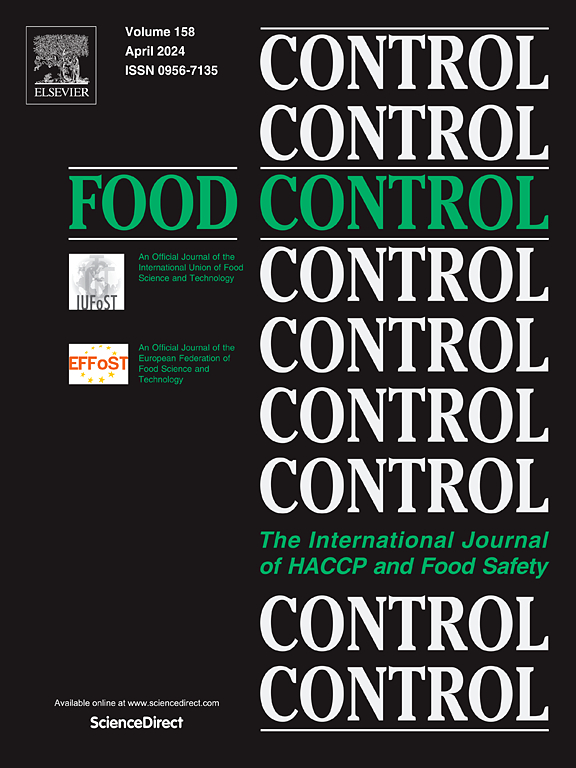影响食用橄榄中丙烯酰胺形成的因素,特别是多酚类
IF 5.6
1区 农林科学
Q1 FOOD SCIENCE & TECHNOLOGY
引用次数: 0
摘要
食用橄榄中含有食源性有毒物质丙烯酰胺,但其形成机制尚不完全清楚。本研究考察了影响绿橄榄和天然黑橄榄丙烯酰胺形成的不同因素。同位素取代天冬酰胺和3-氨基丙酰胺的实验表明,天冬酰胺可以形成丙烯酰胺,形成率在0.19 ~ 1.3 mol%之间。然而,对这些速率的计算表明,这一途径在橄榄中不是主要的途径。在模型系统中,除了天冬酰胺外,还有一种肽导致丙烯酰胺的形成。在橄榄提取物与羟基酪醇的混合物中,在14天的静置期间,绿色橄榄的丙烯酰胺含量增加了2倍,天然黑橄榄的丙烯酰胺含量增加了1.6倍。此外,各种实验表明,多酚的氧化促进了橄榄中丙烯酰胺的形成,这种反应已经在温和的条件下开始了。羟基酪醇似乎在这方面发挥了重要作用,因为在120°C加热后,与其他多酚相比,它使绿色和天然黑桌橄榄提取物中丙烯酰胺的形成增加了35%。本文章由计算机程序翻译,如有差异,请以英文原文为准。
Factors impacting acrylamide formation in table olives with particular focus on polyphenols
The food-borne toxicant acrylamide occurs in table olives, but the formation mechanism is not fully understood. This study investigated different factors influencing acrylamide formation in green and naturally black table olives. Experiments with isotopically substituted asparagine and 3-aminopropionamide revealed that acrylamide formation through asparagine is possible with formation rates between 0.19 and 1.3 mol%. However, the calculation with these rates showed that this pathway is not the predominant one in olives. In addition to asparagine, a peptide led to acrylamide formation in model systems. In mixtures of olive extract with hydroxytyrosol, acrylamide contents rose by a factor of 2 for the green and 1.6 for the naturally black table olive during 14 days of standing. Furthermore, various experiments indicated that the oxidation of polyphenols enhances acrylamide formation in olives and that reactions already start under mild conditions. Hydroxytyrosol appears to play an important role in this, as it increases acrylamide formation in green and natural black table olive extracts by up to 35% compared to other polyphenols after heating at 120 °C.
求助全文
通过发布文献求助,成功后即可免费获取论文全文。
去求助
来源期刊

Food Control
工程技术-食品科技
CiteScore
12.20
自引率
6.70%
发文量
758
审稿时长
33 days
期刊介绍:
Food Control is an international journal that provides essential information for those involved in food safety and process control.
Food Control covers the below areas that relate to food process control or to food safety of human foods:
• Microbial food safety and antimicrobial systems
• Mycotoxins
• Hazard analysis, HACCP and food safety objectives
• Risk assessment, including microbial and chemical hazards
• Quality assurance
• Good manufacturing practices
• Food process systems design and control
• Food Packaging technology and materials in contact with foods
• Rapid methods of analysis and detection, including sensor technology
• Codes of practice, legislation and international harmonization
• Consumer issues
• Education, training and research needs.
The scope of Food Control is comprehensive and includes original research papers, authoritative reviews, short communications, comment articles that report on new developments in food control, and position papers.
 求助内容:
求助内容: 应助结果提醒方式:
应助结果提醒方式:


